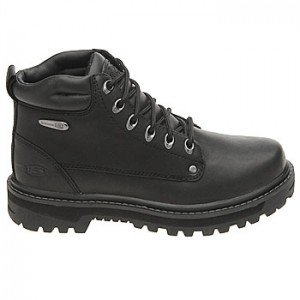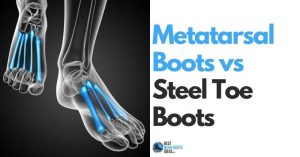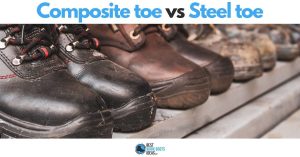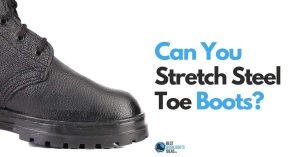What Size Bunny Boots Should I Get? Learn how the right fit can keep your feet warm, comfortable and safe

If you’re going to be in the most brutally cold environment, it’s a good idea to get properly sized bunny boots.
Bunny boots go by different names, but they all have the same characteristics, so today I’ll talk about the best features of bunny boots and what you need to know before buying a pair.
The most important thing to know about bunny boots is that they don’t fit the same as most shoes do. Let’s get into what all that means.
Contents
How To Get The Best Fit In A Bunny Boot
Sizing for bunny boots requires you to go a little larger than you would in normal work boots.
While wearing these boots, you’ll be wearing thick heavy socks, something that needs to be taken into consideration when picking the right size.
There’s also the design itself, which performs best when it has a little room to breath.
If the foot is tightly wedged against the sides of the boot it will compress the insulating layers and limit their performance.
This is another factor that requires you to adjust your sizing a bit.
So you need a larger boot, but the thing is…bunny boots run large!
This is something that is a little inconsistent and will require you to go try a pair on before making any purchases.
After Looking through reviews, and various message boards, there was no consensus on sizing rules.
This is a topic that’s difficult to write about, as this is a niche product and most discussion about it is coming from individuals, not industry professionals or academics.
The little discussion occurring is coming from reports that the US military is seeking to upgrade the design.
Some people said they bought higher than their normal size, some bought lower.
It was agreed that they should be loose-fitting shoes and that they were an immensely useful design.
Everyone loved their bunny boots and relied on them immensely.
Wait, Lets Start Over: What Is A Bunny Boot?
A bunny boot is a type of specialized footwear made for the coldest environments known.
These boots are highly insulated and completely waterproof to protect their users from the coldest temperatures known to people.
They are made by vacuum sealing felt and wool in between the rubber inners and outers of the boots.
In addition to the above, along with a completely watertight construction, makes bunny boots the warmest boot available on the market.
Felt is the unsung hero in terms of insulating materials.
In case you’re wondering if these boots really live up to their hype, know that they’re the boot of choice for scientists working in Antarctica!
They’re also part of a winter preparedness kit detailed by the State University of North Dakota, an area familiar with the dangers of the cold.
With no fabric liners, you can fill these boots with water, dump them out, wipe them with a rag and they’d still be 100% functional in any conditions.
It makes these a life-saving pair of tools in certain situations, and certainly something that makes winter weather more tolerable.
Because of the vacuum sealed construction, Bunny boots have an air valve on them to be opened while flying or at extreme heights.
Failing to do so could cause the boots to rupture due to a pressure differential.
This is a feature I have never seen before, totally unique to the bunny boot.
You’ll often see pilots wearing them and they are used by the US Army as part of their official issue of military boots.
If you’ve lived in a temperate climate, you might not have even known this type of footwear existed, at least not by name; I certainly didn’t.
I had thought, “I’m sure there’s some crazy cold weather boot the military has,” but I never had a name to put to it.
Now I do, a bunny boot.
Who Invented The Bunny Boot?
Bunny boots are actually titled Extreme Cold Vapor Barrier Boots (Type II), and were invented at the Navy Clothing and Textile Research center in Natick, MA.
Their earlier Type I is what we refer to as mickey mouse boots.
We’ll get into the differences between them a little further on.
These boots were made in response to the extreme conditions experienced by US soldiers during the Korean War.
Even wearing mickey mouse boots, bunny boots’ predecessor, soldiers were experiencing frostbite and even losing feet to the extreme cold weather.
Bunny boots were the military’s response to conditions their soldiers were experiencing that threatened their ability to fight, or even remain alive in the weather.
What Temperatures Are Bunny Boots Made For?
Bunny boots are good for temperatures as low as -60 degrees fahrenheit.
With layers and layers of felt and rubber, bunny boots are great for anyone doing winter hunting, camping, or scientific work in brutally cold climates such as ice and snow.
Keep in mind that these boots were designed for people in the mountains, in the winter, fighting a war.
They were truly built for the most extreme conditions, so they should be good for whatever you might need them for.
I’m obligated to say, regardless of any temperature rating system, these are incredibly cold temperatures we’re discussing, and no boot will keep you safe indefinitely.
Always take great care when in such climates and don’t rely on any one thing to keep you safe!
What’s In A Name: Why Is It Called A Bunny Boot?
Bunny boots are named after their white exteriors, and furry inners that look like a bunny.
It also has to do with the fact that bunny boots were an upgraded design to an earlier boot that had already been distributed to soldiers and gotten a cheeky nickname.
That boot was colloquially referred to as a Mickey Mouse boot, and in contrast to Bunny boots, they were jet black.
Their color and extra insulated lining made the wearer end up looking like Mickey Mouse while he was wearing them.
We’ll talk about mickey mouse boots in a minute.
Keep in mind, most items distributed to soldiers get a nickname.
That nickname is what we end up calling them if those.
Jeep vehicles are a great example of this where the Model GPW transformed into JEEP as soldiers just made a word out of the first two initials.
Are Bunny Boots And Mickey Mouse Boots The Same?
No, they are not the same. Bunny boots are considered to be an upgraded mickey mouse boot, in terms of the temperatures they’re rated for. Bunny boots are able to withstand far colder temperatures than mickey mouse boots.
That said, both of these styles are considered a type of tactical boot, and you might hear both of them described as such.
This is much like how some people refer to many different types of work boots as steel toe boots, even though there’s no steel in them.
Depending on how cold the temperature is expected to be, there’s a use for both levels of insulation.
It all depends on the needs of the person buying them. If you’re interested in getting a pair, look into the manufacturer’s temperature ratings before making any purchases.
Where Can I Buy Bunny Boots?
You can buy bunny boots online, there are a number of hunting and camping supply sites that sell them.
‘Official’ bunny boot production ceased in 1992, so it’s only possible to buy a used pair, unless you get incredibly lucky and find an unopened pair, 30 years later.
There is no shortage of people who swear by the original design manufactured by a company called Bata.
Imitations have been made in the years since, but outdoor enthusiasts unanimously agree that modern recreatations don’t hold up to the originals.
For this reason, there’s still a healthy market of used bunny boots you can buy online.
Some of the online marketplaces sell them.
Thankfully their rubber liner makes it so they don’t absorb foot odors the way traditional boots do, and it’s not a revolting idea to purchase a used boot.
Hopping On Out
I hope that shines a little light on bunny boots and what they’re used for.
It’s good to know that even in the most extreme environments, there is some protective gear that can keep us safe.
I am not currently living in the type of climate where bunny or even mickey mouse boots would make any sense.
That said, there are million upon millions of people that live in arctic or sub-arctic areas that could and do benefit from these boots daily.
If you’re there, or planning on being on those conditions, make sure to stay warm and protected.
It only takes one time to do real damage to your body with extreme cold.






